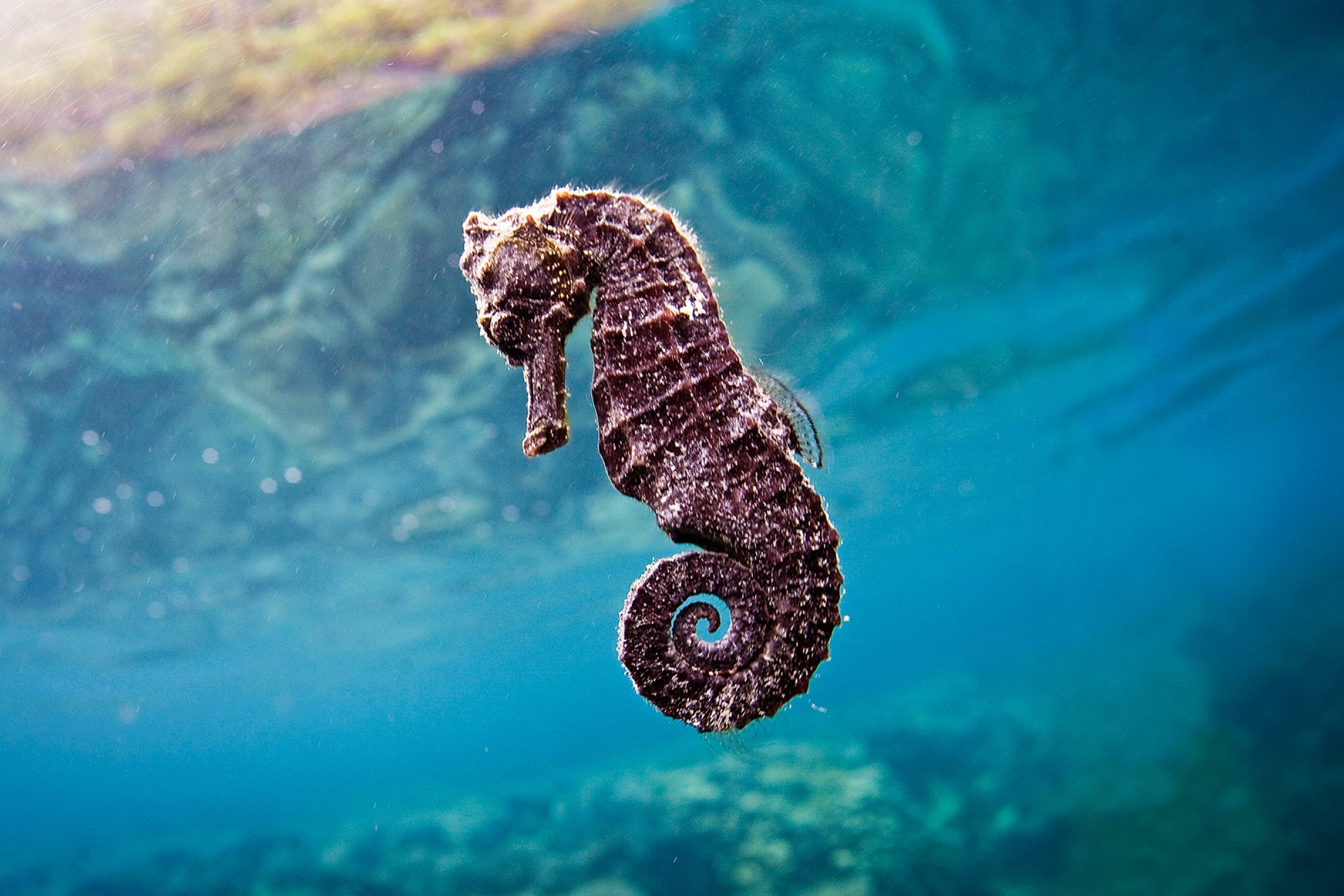Diving with Common Seahorses
The Most Well Known of the Seahorses
The common seahorse is just that, the most common type of seahorse sighted around the world. This species goes by many other names such as estuary seahorse, yellow seahorse, and spotted seahorse, and has been referred to as ‘sea pony’ as well. It is native to the Indo-Pacific region and is quite large as far as they go, averaging between 17-30cm long. These fascinating animals come in a variety of colorations from dark and grainy to yellow with blotches, or reddish with small dark specks. They eat a carnivorous diet consisting mainly of small crustaceans and zooplankton.
Although their populations in Indo-Pacific areas like Japan, Australia, Southeast Asia, the Pacific Islands, and eastern Africa are abundant, they can be difficult to find since they are so perfectly adapted to blend in with their environment. If you want to find them while diving, make sure you go slow, keep your eyes peeled, and look closely along the soft or rocky bottom, as that is their preferred habitat. Check out the map below for the best dive sites where they have been sighted and go diving with the common seahorse today!
Dive Sites with this Animal View more on map

★★★★★ USAT Liberty Wreck
This is the only historical shipwreck in Bali, ranked #3 in the world for Wreck diving! The wreck is 25 meters form shore at a depth of 4 to 29 meters below the surface with most of it occuring in a shallow area. This dive site does not have strong currents, has clear water, and warm temperatures. Difficult entry!

★★★★★ La Cresta - Isla del Fraile
The Dutch cave is a small hollow located in the southern wall of the lower part of Cabo de Cope in Calabardina. One of three dives on the Isla del Fraile with no or very slight current, you will follow along the wall with a progressive drop from 5 to 25m.

★★★★☆ Frederiksted Pier
One of the top macro dives anywhere! Scattered ruins and columns are coral encrusted and provide habitat for many types of shallow sea life. The pier is 1526ft/465m long so lots to discover with a gradual westerly decline. Perfect for snorkeling & non-certified divers too.

★★★★☆ Badia de Tamariu
The boat jetty and the entrance to this house reef are only 30 m from the base. The most beautiful part of the bay is reserved for divers and swimmers and secured by a buoy line. This beautiful house reef offers something for everyone down to a maximum depth of 15 m.

★★★★☆ El Peñon (Wreck)
El Peñon is one of the best wreck dives in Tenerife. This wreck is perfect for the wreck diver specialty, but also for fun dives. Sea conditions are great for most of the year.

★★★★☆ Crashboat Wall and Anchor
This site is the remnant of an old pier. It is a shallow site, no more than 30-35 feet of depth with a sandy bottom. The wreckage on the bottom provides an artificial reef for a large variety of marine life. Visibility ranges between 10 feet (if it has been raining) to over 50 or 60 feet.
